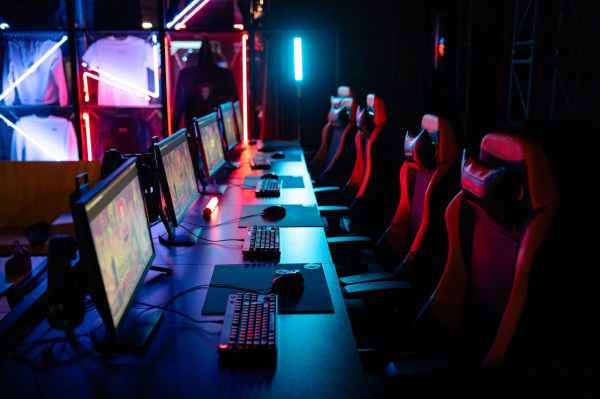The historical evolution of eSports would be hard to imagine without the technological revolution we are living through.
Improvements in technological features that make the experience unique for both spectators and those professionally involved in eSports.
Technology enhances the eSports spectator experience
Improved technology (combining 5G with other technologies such as Virtual Reality or Augmented Reality) is allowing spectators to enjoy new possibilities when it comes to enjoying sporting events, with the multiplication of immersive experiences, for example.
eSports are no exception, and the advancement of technology makes it possible for spectators to enjoy competitions with better broadcasting conditions.
Likewise, the possibilities of interaction through the live broadcasting platforms of the competitions are increasing, which is why the audience feels more connected and closer to the competition, having the feeling of being part of it.
This feeling of greater involvement in the competitions also allows access to exclusive content or the generation of personalised experiences.
How technology is helping eSports players
5G technology is a breakthrough in accessibility and gaming experience due to its higher capacity, increased bandwidth and lower latency.
Already in 2022, and during MWC, the potential of 5G in eSports competitions was demonstrated.
The experience consisted of a dozen influencers and professional players who competed in real time and from different locations in Barcelona, Lleida and Madrid in the 5G Wild Rift Cup competition, played entirely on a commercial 5G network.
As explained on our website, “the online multiplayer mobile gaming experience depends on the stability, speed and latency of the different network connections used by the players. Thanks to 5G technology, download speeds have increased in mobility and latency has been reduced, allowing for immediate response and enabling eSports competitions where mobile gamers can compete with others connected from fibre networks.
How technology impacts the development of video games
But technology doesn’t just serve to enhance the experience for both those playing and those enjoying the show.
It also plays a fundamental role in the development of video games, providing developers with new tools for peripherals and other devices as well as for software improvements.
A paradigmatic example of how technological progress can modify the world of video games is Pokémon Go, an Augmented Reality game that revolutionised the entire world in 2016 by combining the physical and real worlds.
A revolution of a magnitude that numbers can help us to contextualise: while it took 75 years for the landline telephone to reach 100 million customers, it took this video game less than a month: 25 days to be precise.
Conclusion
Technological progress at different levels is already enabling developments in different areas of eSports, both in terms of the possibilities for spectators to enjoy competitions and events and for gaming professionals themselves.
One particular case is 5G, whose increased capacity and bandwidth, as well as the very low latency, allow users to enjoy a much better experience.
Developments in Virtual Reality or Augmented Reality in the world of video games in general also open up a new future of possibilities in the field of gaming competitions.











